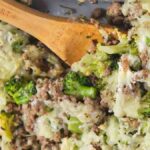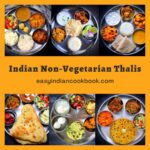Imagine a world of light and airy cakes, muffins, and even meringues, all crafted without a single egg. Sounds impossible? Think again! This guide unveils the secrets to achieving unbelievably fluffy baked goods, even without the traditional binding power of eggs. We’ll explore a variety of ingenious egg substitutes, from humble applesauce to versatile flaxseed meal, each offering unique textural contributions to your culinary creations. Prepare to be amazed as we transform the limitations of egg-free baking into opportunities for delicious innovation.
Through detailed recipes, insightful explanations of baking science, and practical tips, you’ll master the art of creating light, airy, and utterly delightful treats. We’ll navigate the nuances of mixing techniques, leavening agents, and baking times, ensuring your egg-free masterpieces rise to their full potential. Get ready to experiment with flavor variations, from classic vanilla to zesty lemon and rich chocolate, and discover a whole new dimension of baking possibilities.
Mastering Techniques for Fluffy Egg-Free Baking

Achieving light and airy egg-free baked goods requires a nuanced understanding of mixing techniques and the interaction of leavening agents. Unlike eggs, which contribute both structure and leavening, egg-free baking relies heavily on precise methods to create the desired texture and rise. Mastering these techniques transforms ordinary ingredients into delightfully fluffy treats.
The Importance of Proper Mixing Techniques
The success of egg-free baking hinges significantly on the careful manipulation of ingredients. Overmixing can lead to a tough, dense product, while undermixing results in uneven rising and a lack of volume. Creaming, a crucial technique, involves beating together fats (like butter or oil) and sugar until light and fluffy. This process incorporates air, creating a foundation for a tender crumb. Imagine the transformation: Initially pale and firm, the butter and sugar gradually lighten in color, becoming a voluminous, almost cloud-like mixture. This airy texture is essential for trapping air bubbles, crucial for lift. For incorporating dry ingredients, the gentle folding technique is paramount. This minimizes the disruption of air bubbles already incorporated, resulting in a delicate, even texture. Folding involves a slow, circular motion, using a spatula to gently lift and turn the batter, ensuring a smooth, consistent consistency. Visualize a delicate dance between the dry and wet ingredients, each movement carefully orchestrating the final airy product.
The Role of Leavening Agents in Egg-Free Baking
Leavening agents, such as baking powder and baking soda, are indispensable for creating lift in egg-free baked goods. Baking powder, a complete leavening agent, contains both an acid and a base, reacting when exposed to moisture and heat. This reaction generates carbon dioxide gas, causing the batter to rise. Baking soda, a chemical leavening agent, requires an acidic ingredient to activate. In egg-free recipes, this acid might be lemon juice, buttermilk, or vinegar. The interaction between the baking soda and the acid produces carbon dioxide, providing additional lift. Imagine the tiny bubbles forming within the batter, expanding and pushing against the surrounding structure, creating the characteristic light and airy texture. The right balance of leavening agents is crucial; too much can lead to a bitter taste and an overly coarse crumb, while too little results in a dense, flat product. A successful egg-free recipe relies on a carefully calibrated interplay between these chemical reactions and the physical incorporation of air through creaming and folding.
Preventing Common Problems in Egg-Free Baking
Dense texture and uneven rising are frequent challenges in egg-free baking. Dense textures often result from overmixing, which develops gluten and reduces the air pockets in the batter. Uneven rising may stem from inconsistent ingredient distribution or insufficient leavening. To address these issues, use a gentle hand when mixing, employing the folding technique meticulously. Ensure all ingredients are at room temperature, allowing for even distribution and proper chemical reactions. Properly measuring the leavening agents is paramount, ensuring that the necessary amount is present to provide adequate lift. Imagine a perfectly risen cake, evenly browned, with a light and airy crumb—the result of careful attention to detail and a thorough understanding of the science behind egg-free baking.
Unlocking the secrets of fluffy egg-free baking is a journey of culinary discovery, filled with both challenges and incredible rewards. From the perfectly risen cake to the delicate crumb of a muffin, mastering these techniques allows for creative freedom and delicious results. By understanding the science behind egg substitutes and mastering the art of proper mixing and leavening, you can confidently create a wide array of light and airy treats. So, embrace the challenge, experiment with different flavors and techniques, and savor the joy of crafting unbelievably fluffy baked goods, all without the use of eggs. The possibilities are as limitless as your imagination.
Essential Questionnaire
Can I freeze egg-free baked goods?
Yes, most egg-free baked goods freeze well. Wrap them tightly in plastic wrap and then foil to prevent freezer burn, and thaw at room temperature or in the refrigerator.
What if my egg-free cake is dense?
A dense cake might indicate overmixing, insufficient leavening, or an incorrect baking temperature. Check your recipe and technique for possible errors.
Are all egg substitutes interchangeable?
No, different substitutes affect texture differently. Applesauce adds moisture, while flaxseed meal provides binding. Choose based on the desired outcome.
How long do egg-free baked goods last?
This depends on the recipe and storage. Generally, they last 3-5 days stored properly in an airtight container at room temperature.


